 |
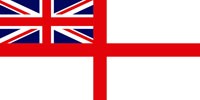 |
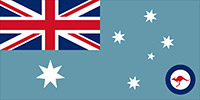 |
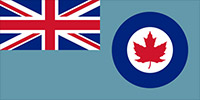 |
 |
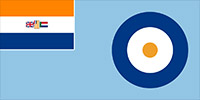 |
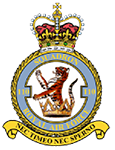
RAF No 110 Squadron
RAF No 110 (Hyderabad) Squadron
Motto: Latin: Nec timeo nec sperno – I neither fear nor despise.
Formed at Rendcombe as a light bomber squadron on 1November 1917, it was initially used in the training role. DH9As were received in July 1918 and the next two months were spent working up, with the squadron arriving in France in September. Joining the Independent Force, it carried out daylight raids against targets in Germany remaining on the continent as a light transport (mail) unit until disbanding on 27 August 1919.
The squadron reformed at Waddington on 18 May 1937 as a Hind light bomber unit. Blenheims arrived in January 1938 and by the outbreak of war the early Mk Is had been replaced by Mk IVs. These were used in the first bombing raid of the war, together with No 107 Squadron. Prior to and during the Battle of Britain, it carried out attacks on coastal convoys, invasion barges and coastal targets and then after the battle added enemy airfields and industrial targets to its list.
In July 1941, it sent a detachment to Malta, which carried out attacks against Axis convoys and coastal targets in Italy, Sicily and North Africa. The remainder of the squadron continued to operate from the UK as normal. Inn March 1942, both elements rejoined and moved to India, flying out new Blenheims, but on arrival these were distributed to other units. In October the squadron received its own equipment, in the form of Vengence dive-bombers.
Operations with Vengences began in March 1943, in support of 14th Army in Burma. In May 1944, the squadron returned to India and began converting to Mosquitoes, although a flight of Vengence went to the Gold Coast to undertake insectocide-spraying activities in an attempt iradicate mosquitoes in the area. This flight never returned to the squadron and disbanded in December. The rest of the squadron recommenced operations at the end of March 1945 and continued in operation until the end of war. Various moved followed the ending of hostilities, in September it went to Singapore, October to Java, in December a detachment moved to Labuan with the rest of the squadron following in February 1946, where the unit disbanded on 15 April.
Two months later the squadron reformed when No 96 Squadron in Hong Kong was renumbered. It was now a Dakota equipped transport squadron and operated throughout the region. It was temporarily non-operational from July to September 1947, but otherwise continued to provide transport and supply dropping support to security forces in Malaya until disbanding on 31 December 1957, having converted from Dakotas to Valettas between October 1951 and April 1952. The squadron's final incarnation began on 3 June 1959 when Nos 155 and 194 Squadrons were amalgamated into a new No 110 Squadron at Kuala Lumper in Malaya. Initially flying Whirlwind HC Mk 4s in the support helicopter role, these were supplemented by Sycamores in April 1960, with the Whirlwinds being replaced by the much more capable Gnome engined Whirlwind HAR Mk 10s in July 1963, the Sycamores being finally retired in October 1964. From 1966 the squadron also operated in Brunei and Borneo until November 1967 during the Indonesian crisis. It then continued its normal duties in Malaya, until the Far East Air Force was run-down, disbanding on 15 February 1971.
Standards Battle Honours*
Award of Standard originally announced on 17 Jul 1962, effective from 1 Apr 1962 but presented:-
Independent Force & Germany, 1918: Channel & North Sea, 1939-42: Norway, 1940: France & Low Countries, 1940: Dunkirk: Invasion Ports, 1940: Ruhr, 1940-41: German Ports, 1940-41: Fortress Europe, 1940-42: Malta, 1941: Mediterranean, 1941: Arakan, 1943-44: Burma, 1945: Manipur, 1944:
No. 110 Squadron RAF was a unit of the British Royal Air Force, initially formed as a bomber squadron during the First World War. Re-formed during the Second World War, again as a bomber squadron, it was re-formed twice more post-war, firstly as a transport, and then a helicopter squadron, before being disbanded in 1971.
History
Formation and the First World War
No. 110 Squadron RFC was formed on 1 November 1917, at Rendcomb, Gloucestershire, and was equipped with B.E.2c aircraft. The squadron moved to Kenley the following year and re-equipped with the DH.9A – the first squadron to operate this aircraft. Its original complement of DH.9As were the gift of His Exalted Highness, the Nizam of Hyderabad. Each aircraft bore an inscription to that effect,[5] and the unit became known as the 'Hyderabad' Squadron in the newly formed Royal Air Force. The squadron arrived in France in September 1918 and formed part of the Independent Air Force, engaged in the bombing offensive against Germany, and later disbanded on 27 August 1919.[6]
Reformation and the Second World War
The squadron reformed on 18 May 1937 at Waddington, equipped first with Hawker Hinds and then Bristol Blenheims. In 1937 No. 88 Squadron was reformed with personnel drawn from 110 Squadron. In 1939, 110 Squadron was posted to Wattisham along with No. 107 Squadron. On 4 September 1939 Nos. 110 and 107 Squadron led the first RAF raid of the war against Wilhelmshaven. The squadron was mainly involved in anti-shipping strikes during the early part of the war, before being posted to India in March 1942. Later that year the squadron converted to the Vultee Vengeance which it operated until November 1944 when it re-equipped with the de Havilland Mosquito. The squadron disbanded at Labuan on 15 April 1946.[7]
Post War on Dakotas and Valettas
The squadron reformed again on 1 June 1946 at RAF Kai Tak via the renumbering of No. 96 Squadron, and was equipped with Douglas Dakotas. In 1948, the squadron took part in Operation Firedog during the Malayan emergency. In October 1951, the squadron converted to the Vickers Valetta which it operated until disbanding on 31 December 1957.[8]
On helicopters
On 3 June 1959, 110 Squadron was reformed at Kuala Lumpur from the merger of No. 155 Squadron and No. 194 Squadron, initially equipped with the Westland Whirlwind HC.4. These were in April 1960 supplemented by the Bristol Sycamore HR.14 with the Whirlwinds being replaced by the much more capable Gnome-engined Whirlwind HAR.10s in July 1963, the Sycamores being finally retired in October 1964. From 1963 the squadron also operated in Brunei and Borneo until November 1967 during the Indonesian Crisis. It then continued its normal duties in Malaya, until the Far East Air Force was run-down. The squadron disbanded on 15 February 1971.[9]
Aircraft operated
Aircraft operated by No. 110 Squadron[6][9][10][11]
From To Aircraft Variant Notes Nov 1917 Jul 1918 Royal Aircraft Factory B.E.2 2d, 2e Nov 1917 Jul 1918 Royal Aircraft Factory R.E.8 Nov 1917 Jul 1918 Armstrong Whitworth F.K.3 Nov 1917 Jul 1918 Airco DH.6 Nov 1917 Jul 1918 Martinsyde G.100 A6293[9] Jan 1918 Jul 1918 Airco DH.4 Feb 1918 Aug 1918 Airco DH.9 Jul 1918 Aug 1919 Airco DH.9A Jul 1919 Aug 1919 Airco DH.9 May 1937 Jun 1938 Hawker Hind Jan 1938 Aug 1939 Bristol Blenheim Mk.I Jun 1939 Mar 1942 Bristol Blenheim Mk.IV Oct 1942 Dec 1944 Vultee Vengeance Mks.I, Ia, II Nov 1944 Jan 1945 Vultee Vengeance Mks.III, IV Nov 1944 Apr 1946 de Havilland Mosquito Mk.VI Jun 1946 Jul 1947 Douglas Dakota C.3, C.4 Sep 1947 Apr 1952 Douglas Dakota C.4 Oct 1951 Dec 1957 Vickers Valetta C.1 Jun 1959 Jul 1963 Westland Whirlwind HC.4 Apr 1960 Oct 1964 Bristol Sycamore HR.14 Jul 1963 Feb 1971 Westland Whirlwind HAR.10
Standards:
Award of Standard originally announced on 15 Jan 1952 but presented:- 1st - 30 April 1957 ACM Sir Harry Broadhurst. 2nd - 2 August 1987 ACM Sir Patrick Hine.
Battle Honours:
Palestine, 1917-1918: Megiddo: Home Defence, 1940-1942: France & Low Countries, 1940: Dunkirk: Battle of Britain, 1940: Fortress Europe, 1941-1942: Dieppe: North Africa, 1942-1943: Sicily, 1943: Italy, 1943-1945: Salerno: Anzio & Nettuno: Gustav Line: France & Germany, 1944:
Squadron Codes used: -
AY Oct 1938 - Sep 1939
VE Sep 1939 - Mar 1942Citations
Moyes 1976, p. 155. Pine, L G (1983). A Dictionary of mottoes. London: Routledge & K. Paul. p. 148. ISBN 0-7100-9339-X. Halley 1988, p. 183. Rawlings 1982, p. 99. Bell 1971, p. 1 and p. 24 (photograph). Jefford 2001, p. 58. Bell 1971, p. 13. Bell 1971, p. 17. Halley 1988, p. 185. Bell 1971, Appendix 2, P. i. Rawlings 1982, pp. 99–100. Bibliography
Bell, Flight Lieutenant Elwyn D. Hyderabad Squadron: The Story of No. 110 (Hyderabad) Squadron Royal Air Force. Stone Cottage, Great Sampford, Saffron Walden, Essex: Air-Britain (Historians) Ltd., 1971. ISBN 0-85130-014-6. Halley, James J. The Squadrons of the Royal Air Force & Commonwealth 1918–1988. Tonbridge, Kent, UK: Air Britain (Historians) Ltd., 1988. ISBN 0-85130-164-9. Jefford, C.G. RAF Squadrons, a Comprehensive record of the Movement and Equipment of all RAF Squadrons and their Antecedents since 1912. Shropshire, UK: Airlife Publishing, 1988 (second edition 2001). ISBN 1-85310-053-6. Moyes, Philip J.R. Bomber Squadrons of the RAF and their Aircraft. London: Macdonald and Jane's (Publishers) Ltd., 2nd edition 1976. ISBN 0-354-01027-1. Rawlings, John D.R. Coastal, Support and Special Squadrons of the RAF and their Aircraft. London: Jane's Publishing Company Ltd., 1982. ISBN 0-7106-0187-5.
 Editor for Asisbiz: Matthew Laird Acred
Editor for Asisbiz: Matthew Laird Acred
If you love our website please add a like on facebook
Asisbiz has been running since July 2006 and can continue to run with your kind help!
Please donate so we can make this site even better !!